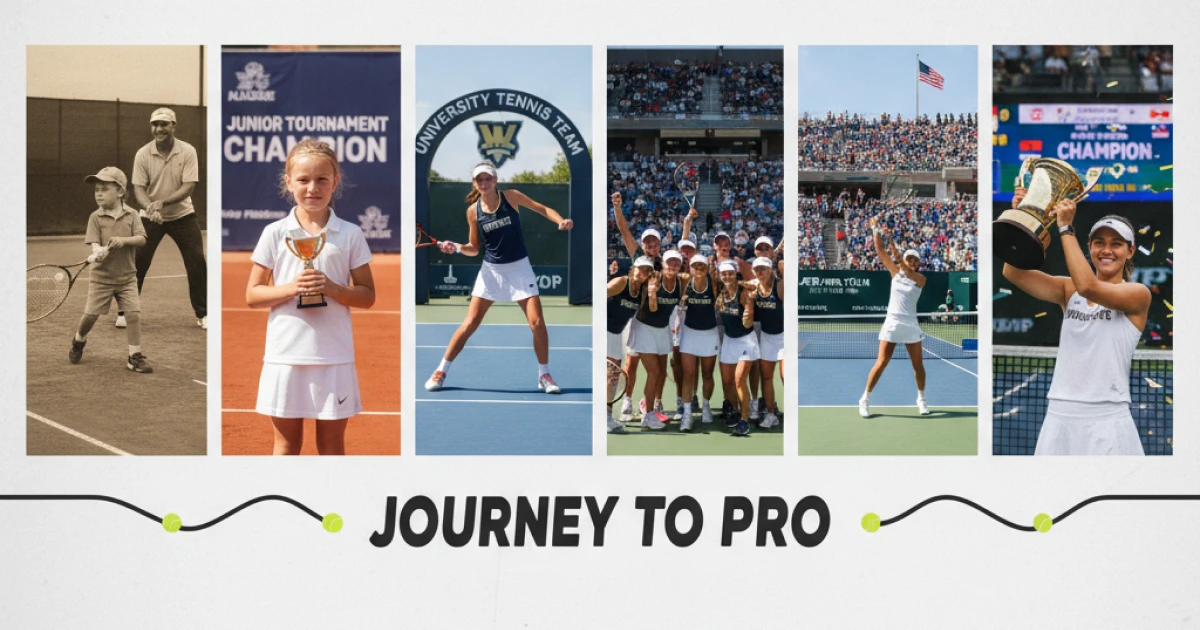Navigating the Path: A Parent’s Guide to Choosing the Right Tennis Academy in Europe for Your Junior Player
Choosing the right tennis academy in Europe can be a game-changer for your junior player. From elite coaching and world-class facilities to academic support and cultural exposure, this guide helps parents navigate the key factors to find the perfect academy for their child’s development on and off the court.

The Importance of Choosing the Right Academy
Choosing the right tennis academy is a pivotal decision for families with young athletes aspiring to compete at the highest levels. A quality academy not only hones technical skills but also fosters mental resilience, academic growth, and cultural awareness.
For juniors, especially those from the US, UK, or UAE, studying and training abroad can provide unparalleled exposure to international competition, coaching expertise, and state-of-the-art facilities. The right academy aligns with your child’s developmental goals, learning style, and personal values—ensuring their growth both on and off the court.
Factors to Consider When Choosing an Academy
Coaching Quality and Philosophy
The foundation of any tennis academy is its coaching staff. Experienced coaches with a proven track record in developing elite juniors are invaluable. Look for academies that emphasize:
-
Personalized training programs
-
Technical, tactical, and mental development
-
Balanced focus on competition and personal growth
Some academies also specialize in preparing juniors for professional tours or collegiate tennis.
Program Structure
European tennis academies offer different program types:
-
Full-Time Programs: Ideal for juniors aiming to train and study abroad simultaneously.
-
Part-Time Programs: Suitable for families looking for short-term exposure or summer camps.
-
Specialized Camps: Focused on specific skills, like clay-court play or mental conditioning.
Parents should evaluate which structure aligns with their child’s schedule, competitive level, and long-term goals.
Academic Integration

Balancing academics and intensive training is crucial for juniors. Top academies often provide:
-
Accredited schooling or online curricula
-
Language support for international students
-
Flexible schedules that complement training sessions
This ensures that young athletes do not compromise their education while pursuing tennis excellence.
Cultural Environment
Training abroad exposes juniors to new cultures and languages. Factors to consider include:
-
Language barriers and support
-
Lifestyle and safety of the local area
-
Opportunities for cultural immersion and social development
A welcoming environment helps children adapt quickly and thrive both personally and athletically.
Facilities and Location
High-quality facilities enhance the training experience. Key considerations:
-
Number and types of courts (clay, grass, hard)
-
Gym and fitness resources
-
Recovery and medical facilities
-
Accommodation options on or near campus
Location can also influence travel convenience, climate adaptability, and access to competitive tournaments.
Cost and Financial Planning
European academies vary widely in cost. Parents should factor in:
-
Tuition fees
-
Accommodation and meals
-
Travel expenses
-
Optional extras (private coaching, tournaments, equipment)
Some academies offer scholarships or financial aid, which can make elite training more accessible.
Top Tennis Academies in Europe: A Comparative Analysis
Rafa Nadal Academy – Spain
-
Focus: Technical excellence and mental toughness
-
Programs: Full-time residential and summer camps
-
Highlights: Training under Nadal’s coaching team, clay-court specialization
Mouratoglou Academy – France
-
Focus: High-performance development and professional preparation
-
Programs: Junior and adult programs, tournaments, and fitness camps
-
Highlights: Proven track record with top WTA and ATP players
JC Ferrero Equelite Sport Academy – Spain
-
Focus: All-round athlete development with strong academic integration
-
Programs: Residential and day programs, specialized coaching
-
Highlights: Balanced emphasis on education and tennis
IMG Academy – Europe-based programs for international players
-
Focus: Comprehensive sports development with modern facilities
-
Programs: Year-round and seasonal programs
-
Highlights: College prep and professional pathways
Testimonials and Success Stories
Hearing from other parents and juniors can provide valuable insight:
-
“Our daughter improved tremendously in just six months at Rafa Nadal Academy. The coaches not only focused on her skills but also on her mindset.” – Parent, UAE
-
“Mouratoglou Academy helped me transition smoothly from local competitions to international junior tournaments. The experience was life-changing.” – US Junior Player
Practical Tips for Parents
-
Visit the Academy: Tour facilities and meet coaches if possible.
-
Research Alumni Success: Evaluate past players’ achievements.
-
Prepare Logistically: Arrange visas, accommodation, and health insurance.
-
Cultural Preparation: Teach basic language skills and cultural norms to ease transition.
-
Monitor Progress: Stay involved with regular feedback from coaches and staff.
Conclusion: Making an Informed Decision
Selecting the right tennis academy in Europe requires careful consideration of coaching quality, program structure, academics, culture, facilities, and cost. By thoroughly researching options and understanding your child’s unique needs, you can make a decision that maximizes their potential both on and off the court.
European academies not only develop tennis skills—they nurture independence, resilience, and a global mindset, equipping juniors for long-term success.


